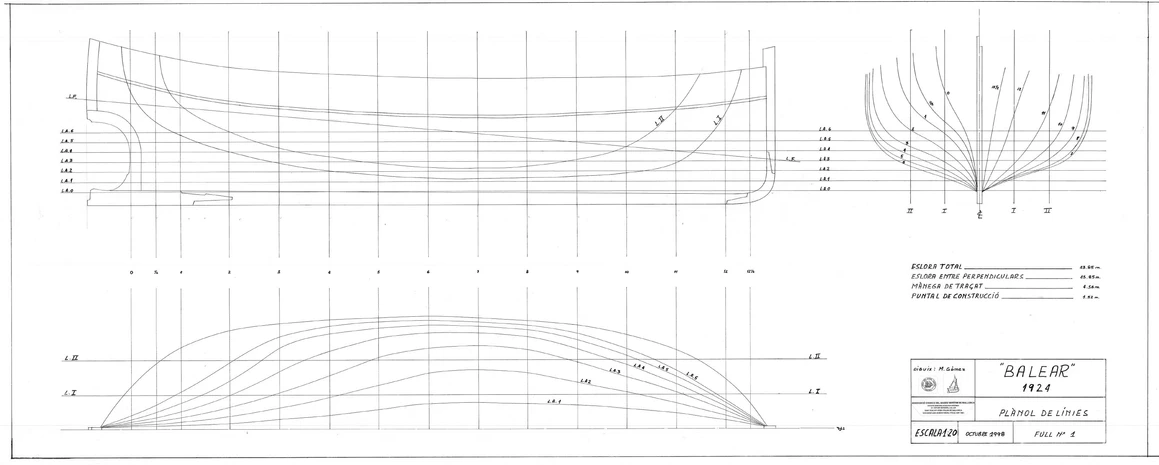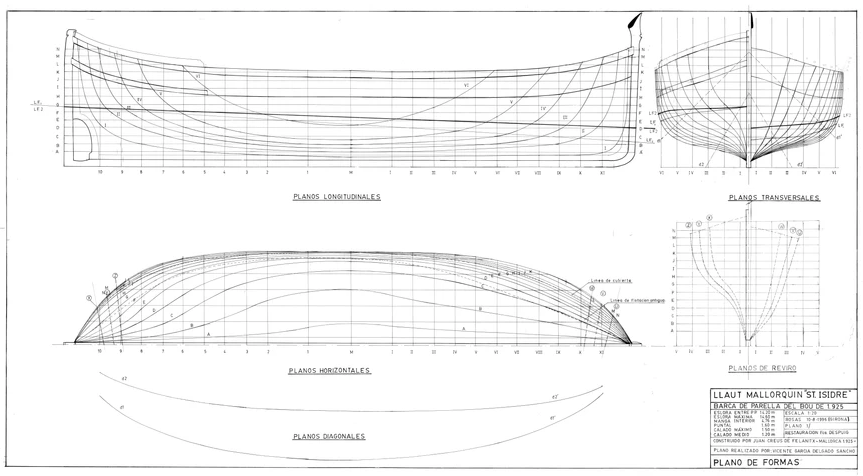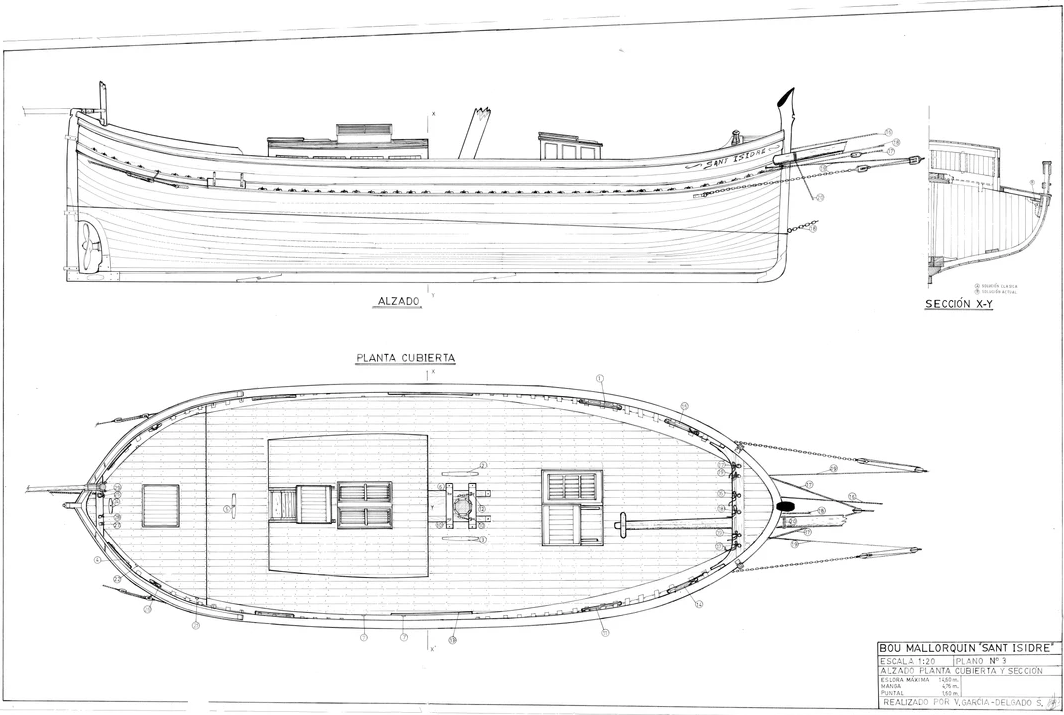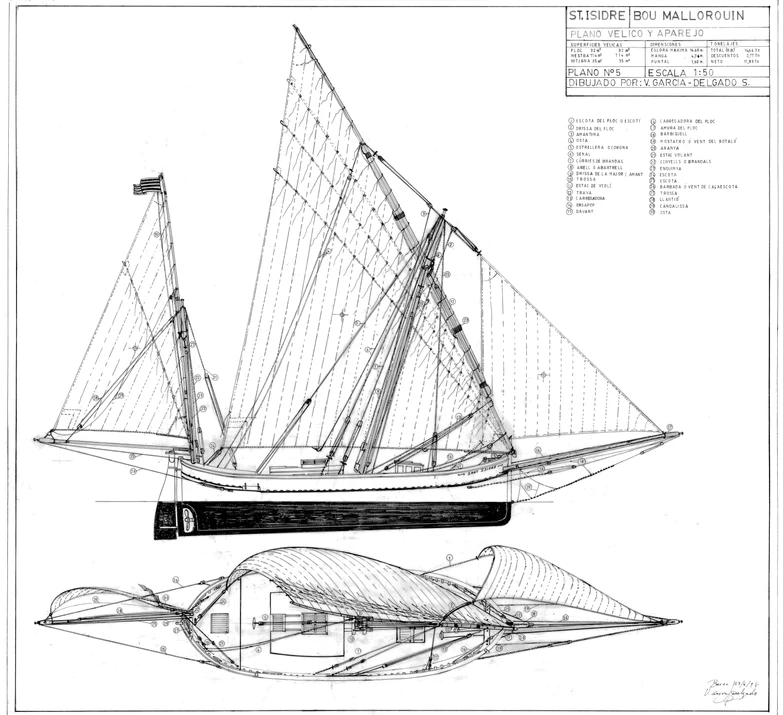Ideas and concepts for building a model of the San Miguel
First of all, it must be said that iconography for 1899 is scarce, except for the prints by Archduke Ludwig Salvator, and even more scarce are graphic or written sources for plans or documents that might orientate us in carrying out the project.
However, the material available, from the beginning of the 20th century, and the handwritten documents about the expedition that have been preserved, allow us to draw several interesting conclusions from which to piece together an image or the appearance of our llaüt San Miguel.
According to the Journal of the Santanyí expedition, it was a llaüt possibly devoted to wing net fishing, whose rigging, though still undecided, comprised mainsail, mizzen and jib. Let us recall that the Cavallots owned a fleet of wing net boats and that the skipper’s father, Antoni Antich, had made a fortune from fishing and smuggling. From the number of people on it, the 9 expeditioners, the skipper Jaume Antich Cavallot, at least two sailors, and the ship’s boy (making a total of 13 people), we may assume that the llaüt was between 12 and 14 metres in length, more 14 than 12, and that it was equipped with an uncovered dinghy of about 3.50 metres.
For this reason, we shall follow the shapes and measurements of wing net boats still in operation and for which information is available, in particular, the Balear, from Palma, and the Sant Isidre, from Cadaqués. The Balear, from 1924, is a second-generation wing net boat and a good example of a llaüt similar to the San Miguel, with a length of 13.95 metres. Likewise, the Sant Isidre, with a length of 14.60 metres, was built in 1925 in Portocolom and was initially intended for trawler fishing. Shape plans are available for both vessels: those for the Balear designed by Manuel Gómez Planas and those for the Sant Isidre by Vicente García Delgado. By studying these shape plans and interpreting what historical information survives, as well as what is subtly hinted at in the Journal, we shall draw up the plans for the model of the San Miguel.
In particular, from the information appearing in the Journal, we could calculate the measurements of the llaüt as being 14 metres in length by 4.50 in breadth and the measurements for the model as approximately 1 metre in length by around 40 cm in breadth. Even so, the measurements for the model are still pending. It seems very clear that the deck had quite a slant. According to the Termcat Diccionari nàutic, the slant is the transversal curvature on the deck of a boat, making it higher in the middle than at the sides, so that water will flow back quickly into the sea. There is evidence in one of the episodes in the Journal that the gunwale of the San Miguel was very high, giving us, as mentioned, quite a slant.
Obviously, we are well aware that we must, as far as possible, use the appropriate types of wood, and wood which could be found in Mallorca at the time. Thus, for the ribs, the deck and the sheathing, we will use Mallorcan pine; for the keel, the sternpost, the stem, the bar, the rudder and the cathead, it will be holm oak; as well as other materials such as iron, copper, brass, cotton, etc.
What probably causes most uncertainty is how to build and show the interior of the boat with all its rooms. However, we believe it is not really advisable, no matter how much we would like to, as both the interpretation and the execution would be based solely on imagination, there being no historical criterion available to help us form an idea of the layout of the rooms on a llaüt in 1899. So, what we shall build is a wooden model with just a small part showing details of the interior structure.
Manuel Gómez Planas – Sebastià A. Adrover Vicens
October 2019









